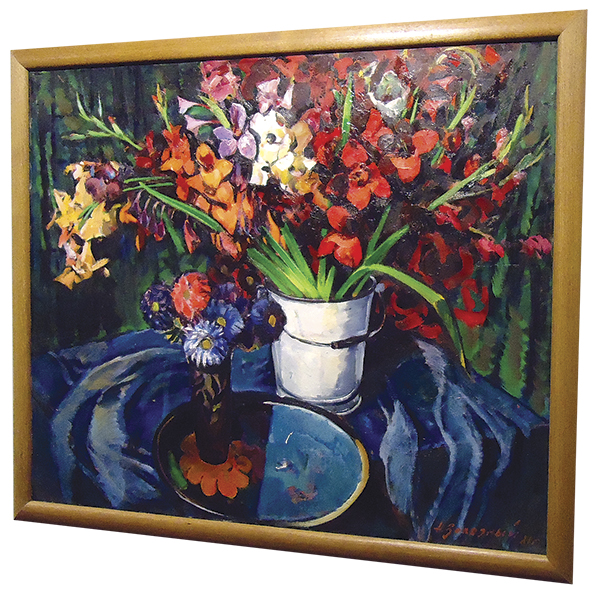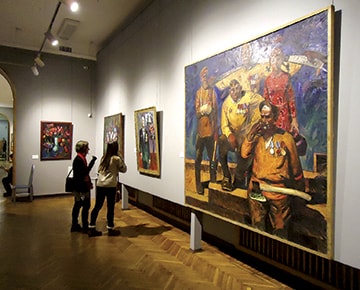
Nikolay Zalozny’s exhibition at the National Art Museum
The vivid exhibition comprises picturesque canvases from the museum’s collection, as well as from the Belarusian Union of Artists and from the master’s family. The creative legacy of Nikolay Zalozny, who possessed a strong temperament and colour sense, is a bright page in the history of Belarusian painting.
The artist graduated from Minsk’s Art College and the Belarusian State Theatre and Art Institute. His creative path was dramatic; though lasting only 20 years, he created works that have enriched our national arts culture and have made a significant impact on the style and ideological renewal of Belarusian art.

In order to provide a better understanding and appreciation of Mr. Zalozny’s contribution to Belarusian painting from the second half of the 20th century, we need to look back at the first decade after the fall of Stalin’s regime. New ideology and creative impulses were inspired by this phase in our history. As the ideology of totalitarianism came to an end, art took on the ‘severe style’, depicting dramatic wartime events in a simple monochromatic style.
The new style creativity of Nikolay Zalozny was distinguished by monumentality, laconism and expression. His individual manner was marked by clear use of colour, emotional depth and drama, as seen in such works as Victory, The Female Soldier and He Has Returned.

In the 1960-1970s, he was one of the few Belarusian artists to possess a bright talent and unique painting vision. Today, looking at Nikolay Zalozny’s legacy, we realise that his art, as well as his contribution to the individual ‘face’ of Belarusian painting, remain underestimated.
He was always notable among his colleagues for his expressive colour sense and rich pictorial form, reaching beyond the usual norms of restrained modesty. Mr. Zalozny used a wide colour palette, being ahead of his time, and contributed to the development of Belarusian painting, for future generations of our artists.

In the 1960 and early 1970s, his artistic subjects and atmosphere gradually changed, leaving behind the monumental sizing and ‘severe style’, as well as heroic themes, to focus on depicting everyday lives and the beauty of our landscapes: Gulls (1972); Rowan, (1975); Selyava Lake (1977); and Flowers and Fruits (1980). He was not was always ‘cheerful’ as was required by the slogan ‘The modern generation of Soviet people will live under communism!’ as evinced by his Poppies (1986). This showed the stooping figure of a young woman, falling on her knees in a field, amid lightning, surrounded by giant red poppies. Dramatic and portentous, it failed to show the promised paradise of communism.
Nikolay Zalozny may have found his own inner peace working in the genre of landscape painting and still-life works, conveying his vision for life values and admiration of flowers, which he saw as sublime creations. These elements were his ‘eternal feast’. His brush is saturated, as if hurrying to enjoy the beauty of texture and the buds of peonies bending under the weight of their petals, the fragrance of lilacs, and their incredible diversity of colour.
 |  |
МТ REFERENCE:
Nikolay Zalozny was born in Knyazhichi village in the Kiev Region. He fought in the Great Patriotic War and participated in Prague’s liberation. After demobilisation from the army, he entered the third year of Minsk Art College (graduating in 1954). In 1959, he graduated from the Belarusian Theatre and Art Institute (now the Belarusian State Academy of Arts).
By Veniamin Mikheev











